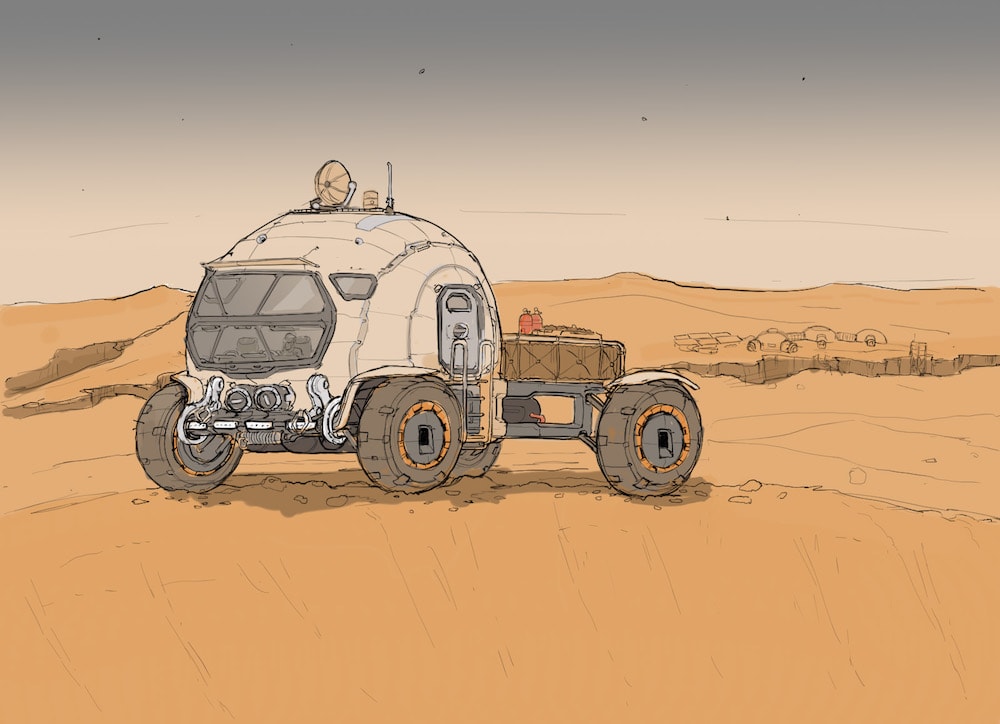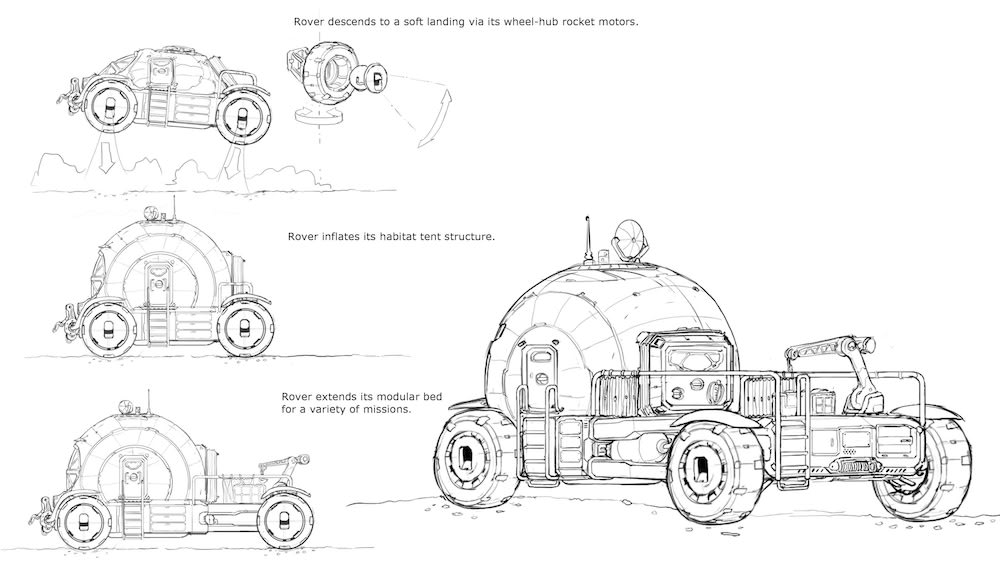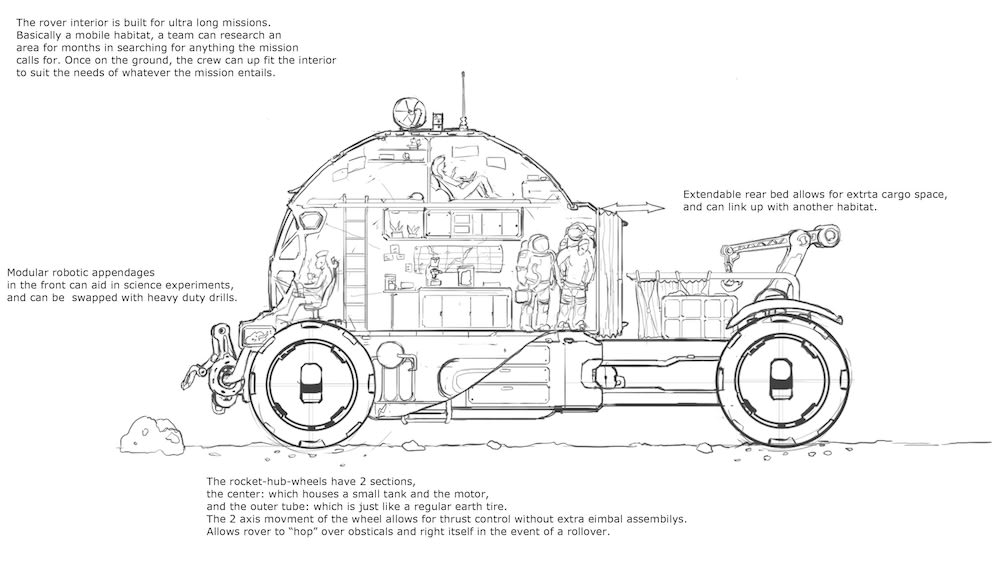Learning from and adapting concepts from both NASA missions, private companies like Space X, and Hollywood, this rover concept has the ability to land itself from a deployed capsule (much like the Curiosity Rover) only rather than have a sky crane that fly's off after its served its purpose. This rover would incorporate its decent thrusters right into its driver train and suspension system. They could be re-used later on in the event of a roll over, to thrust out of a steep trench, thrust up a steep hill, or even cross an un-passable cassavas.
Learning from movies like 'The Martian,' one learns that in the event that something goes wrong, mobility is life and death. In the Apollo missions, the rover extended the range and capability of the mission, so having a rover that you could live in for weeks became the target. With the rover becoming basically a mobile habitat, the scientists can increase their research from mere km to potentially hundreds of km. Saving both time an money, if what could be done with one large mobile-habitat-rover, would be normally done with a small rover with a limit to having to come back to the habitat for re supply.
The rover would be modular in its power train, but its main source of power would be fuel cell. Since the tanks are already integrated into the structure, they could be used to generate power much like conventional hydrogen car, or be used as conventional rocket fuel. In addition to a battery, the rover could potentially have a range of 100km. Since the best fuel cell tech on earth yields a car to get around 300-500 miles on a tank, its not too much of a stretch to anticipate a multi ton vehicle getting that amount of range. The fuel can be reclaimed from drilling into ice and capturing CO2 from the atmosphere.
The vehicle construction is inspired from the BEEM capsule experiment, on the ISS. Where is a structure can deform on the space station, why not on mars? With an adapted outer coating to resist dust erosion, an inflatable habitat would save a lot of cargo reel estate in its capsule, also eliminating assembling the thing from the outside. The interior can be build up Ikea style, and be modular-ized for specific missions and crew sizes.
It is important to over think, and over engineer problems which have extreme circumstances, because when your 200 million km away from the nearest tow truck, repair shop, or human being, you want the over engineered thing.
Like this entry?
-
About the Entrant
- Name:Alex Langensiepen
- Type of entry:individual
- Software used for this entry:Sketch Book Pro
- Patent status:none








